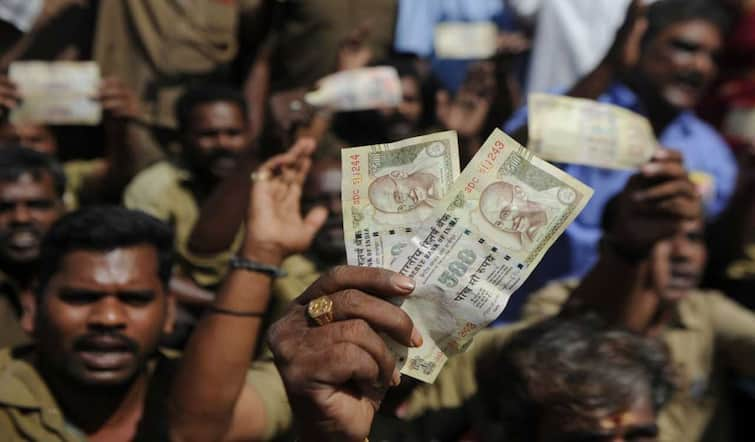Demonetisation Verdict: After hearing the petitions filed against demonetisation, the Supreme Court has given its verdict. In its decision, the court has justified the decision of the central government to ban the notes in 2016. With this, 58 petitions against demonetisation have been dismissed. In the bench of 5 justices, 4 gave a decision in favor of demonetisation by majority. At the same time, the opinion of Justice Bibi Nagaratna was different.
Demonetisation happened on 8 November 2016
On November 8, 2016, the central government suddenly surprised the people of the country by implementing demonetisation in the country. Prime Minister Narendra Modi made this announcement on November 8 at 8 pm when he came through live broadcast. He had said that the notes of 500 and 1000 rupees running in the country will no longer be legal tender, knowing this the general public of the country was surprised. This demonetisation was one of the biggest economic events in the history of India and it also had a big impact on the dimension of politics.
There was not much impact on the currency in circulation in the country.
However, today when we talk about the effect of demonetisation, then demonetisation has not had any significant effect on the currency (CIC) in circulation in the country. Demonetisation was announced on November 8, 2016. Under this, high denomination notes of Rs 500 and Rs 1,000 were discontinued. After the announcement of demonetisation, the currency in circulation today has increased by about 83 per cent. The Supreme Court on Monday justified the government’s decision of demonetisation.
Demonetisation was implemented to promote digital payments.
Prime minister Narendra Modi On November 8, 2016, announced the closure of old Rs 1,000 and Rs 500 notes. His objective behind this was to promote digital payments in the country and stop the flow of black money. According to the Reserve Bank of India (RBI) data, currency or notes in circulation in value terms increased from Rs 17.74 lakh crore on November 4, 2016 to Rs 32.42 lakh crore on December 23, 2022.
However, soon after demonetisation, the CIC came down to a low of around Rs 9 lakh crore on January 6, 2017, by nearly 50 per cent. The currency in circulation on November 4, 2016 was Rs 17.74 lakh crore. This was the lowest level in the last six years after the old 500 and 1,000 bank notes were taken out of circulation. At that time, the share of closed notes in the total notes in circulation was 86 percent.
83 percent increase in currency circulation so far
The currency in circulation has seen a jump of more than three times or 260 per cent since January 6, 2017, while it has seen a jump of around 83 per cent since November 4, 2016. As new notes were introduced into the system, the currency in circulation increased week-on-week, reaching its peak of 74.3 per cent by the end of the financial year. Thereafter, at the end of June 2017, it was at 85 per cent of its pre-demonetisation peak.
Due to demonetisation, CIC declined by about Rs 8,99,700 crore till January 6, 2017, thereby significantly increasing the additional liquidity in the banking system. This was equivalent to a reduction in the cash reserve ratio (as a percentage of deposits with the RBI) of about nine per cent. This posed a challenge to the liquidity management operations of the Reserve Bank. To deal with this, the central bank exclusively used reverse repo auctions under the Liquidity Adjustment Facility (LAF).
Currency circulation in circulation has increased
CIC increased from Rs 31.33 lakh crore at the end of March 31, 2022 to Rs 32.42 lakh crore at the end of December 23, 2022. Excluding the year of demonetisation, the currency in circulation has increased. It decreased by 20.18 percent to Rs 13.10 lakh crore at the end of March 2016. The CIC at the end of March 31, 2015 stood at Rs 16.42 lakh crore. It increased by 37.67 per cent to Rs 18.03 lakh crore in the year following demonetisation. At the same time, it increased by 17.03 percent to Rs 21.10 lakh crore at the end of March 2019 and increased by 14.69 percent to Rs 24.20 lakh crore at the end of 2020.
The growth rate of CICs in value terms in the last two years was 16.77 per cent to Rs 28.26 lakh crore at the end of March 31, 2021 and 9.86 per cent to Rs 31.05 lakh crore at the end of March 31, 2022. In a 4:1 majority verdict, the Supreme Court has justified the government’s 2016 decision to demonetise Rs 1,000 and Rs 500 notes, saying the decision-making process in the matter was flawless.
Opinion of four out of five justices is unanimous, opinion of one justice is different
A five-judge constitution bench of the Supreme Court, headed by Justice SA Nazeer, said that a lot of restraint has to be exercised while taking decisions regarding economic policy and that the court cannot substitute executive decisions by judicial review. Justice BV Nagaratna disagreed with the majority judgment regarding the authority given to the Center under Section 26(2) of the RBI Act and argued that the Rs 500 and Rs 1000 series notes were demonetised by law Had to go and not through notification.
read this also
Be the first to read breaking news in Hindi aajsamacharindia.com| Today’s latest news, live news updates, read most reliable Hindi news website aajsamacharindia.com|
Like us on Facebook or follow us on Twitter for breaking news and live news updates.

